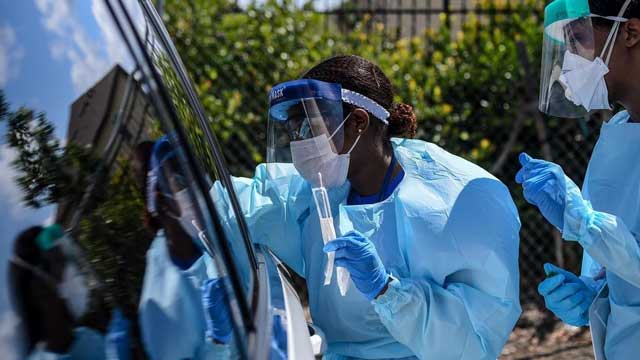
Washington, United States | AFP | Before lifting lockdowns imposed across the United States in March, experts say we’ll need a massive screening system in place to monitor and respond to localized coronavirus surges.
Are we on track? That depends on who you ask.
President Donald Trump has boasted the US has “the best testing system in the world.”
Chuck Schumer, the leader of the opposition Democrats in the Senate, disagrees. “It remains clear that the country’s testing capabilities are dangerously inadequate,” he said Wednesday.
Here is a guide to tests in place in the US, which had as of Wednesday more than 600,000 confirmed cases and almost 28,000 deaths from COVID-19.
– How many –
The US has carried out some 3.2 million tests as of Wednesday, according to the COVID Tracking Project. The number began to soar in late March, and is currently growing by about a million per week.
In absolute terms, that is far more than any other country. Italy has tested about a million, and South Korea around 500,000, according to Our World in Data.
This website compiles data from around the globe with the important caveat that the data is somewhat imprecise.
Some countries declare the total number of tests performed and others on the number of people, and these differ because a person can be tested several times. In the US, the accounting differs from state to state.
But the picture looks different when you account for population. The US is a huge nation with some 330 million people, meaning that the Italians and South Koreans have tested more people per capita: 18 and 10 people per 1000, respectively, compared to nine in a 1000 in the US.
Iceland, with just 364,000 people, has tested about 10 percent of its population.
– Early problems –
Tests were only carried out at the headquarters of the Centers for Disease Control and Prevention (CDC) in Atlanta until the end of February, with no other public or private labs around the country authorized to do the same.
That changed on February 29 — but it took time for the biggest private companies, Labcorp and Quest, to obtain the chemicals needed to get their kits into the market.
At the start of April, an official at a Virginia hospital told AFP it was taking five to seven days to receive their results.
But these delays have now been eliminated, said the American Clinical Laboratory Association, which said there’s considerable excess capacity.
Rapid tests have also arrived on the market, using machines that are already present in clinics that deliver results within 15 minutes.
One problem remains: in a number of places, for example the capital Washington, you can’t get a test unless you have symptoms — even though we know now many carriers are asymptomatic.
– Cost –
Testing is supposed to be free, following a law passed by Congress on March 18.
– Antibody tests –
Much hope is pinned on newly approved serological tests, which can tell whether a person was previously infected long after they recovered by looking for the presence of antibodies that fought the coronavirus.
In theory, these could also help decide which people can return to society because they may now be immune.
New York’s governor said Wednesday the state had developed its own antibody test, and first responders and essential workers would be prioritized.
But they are not yet widely available and major questions surround their reliability. The FDA has approved several recently.
And right now we don’t know whether prior infection confers immunity, and if so for how long.
Medical giant Abbott announced Wednesday that it will ship one million of the tests, with a total of four million by the end of April.
 The Independent Uganda: You get the Truth we Pay the Price
The Independent Uganda: You get the Truth we Pay the Price



